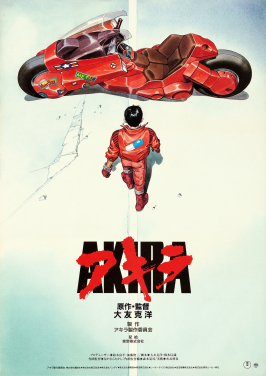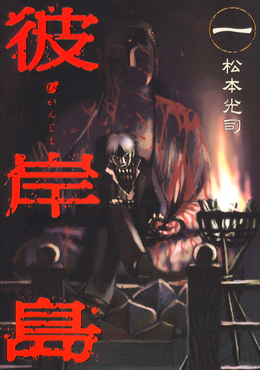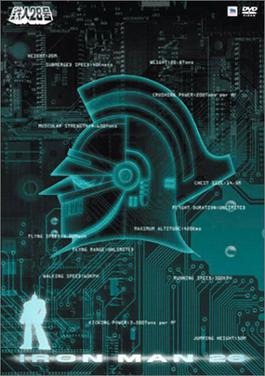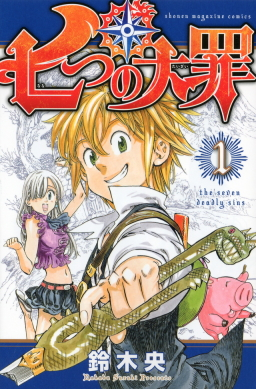
Katsuhiro Otomo is a Japanese manga artist, screenwriter, animator, and film director. He is best known as the creator of Akira, both the original 1982 manga series and the 1988 animated film adaptation. He was decorated a Chevalier of the French Ordre des Arts et des Lettres in 2005, promoted to Officier of the order in 2014, became the fourth manga artist ever inducted into the American Eisner Award Hall of Fame in 2012, and was awarded the Purple Medal of Honor from the Japanese government in 2013. Otomo later received the Winsor McCay Award at the 41st Annie Awards in 2014 and the 2015 Grand Prix de la ville d'Angoulême, the first manga artist to receive the award. Otomo is married to Yoko Otomo. Together they have one child, a son named Shohei Otomo, who is also an artist.

Initial D is a Japanese street racing manga series written and illustrated by Shuichi Shigeno. It was serialized in Kodansha's seinen manga magazine Weekly Young Magazine from 1995 to 2013, with the chapters collected into 48 tankōbon volumes. The story focuses on the world of illegal Japanese street racing, where all the action is concentrated in the mountain passes and rarely in cities or urban areas, and with the drifting racing style emphasized in particular. Professional race car driver and pioneer of drifting Keiichi Tsuchiya helped with editorial supervision. The story is centered on the prefecture of Gunma, more specifically on several mountains in the Kantō region and in their surrounding cities and towns. Although some of the names of the locations the characters race in have been fictionalized, all of the locations in the series are based on actual locations in Japan.

Akira is a 1988 Japanese animated cyberpunk action film directed by Katsuhiro Otomo, produced by Ryōhei Suzuki and Shunzō Katō, and written by Otomo and Izo Hashimoto, based on Otomo's 1982 manga of the same name. Set in a dystopian 2019, it tells the story of Shōtarō Kaneda, the leader of a biker gang whose childhood friend, Tetsuo Shima, acquires incredible telekinetic abilities after a motorcycle accident, eventually threatening an entire military complex amid chaos and rebellion in the sprawling futuristic metropolis of Neo-Tokyo.

Akira is a Japanese cyberpunk post-apocalyptic manga series written and illustrated by Katsuhiro Otomo. It was serialized biweekly in Kodansha's seinen manga magazine Young Magazine from December 20, 1982, to June 25, 1990, with its 120 chapters collected into six tankōbon volumes. It was initially published in the United States by Marvel Comics under its Epic imprint, becoming one of the first manga works to be translated in its entirety into English. It is currently published by Kodansha Comics in North America. Considered a watershed title for the medium, the manga is also famous for spawning the seminal 1988 cyberpunk anime film adaptation of the same name and the greater franchise.

Shotaro Ishinomori was a Japanese manga artist who became an influential figure in manga, anime, and tokusatsu, creating several immensely popular long-running series such as Cyborg 009, the Super Sentai series, and the Kamen Rider series. He was twice awarded by the Shogakukan Manga Awards, in 1968 for Sabu to Ichi Torimono Hikae and in 1988 for Hotel and Manga Nihon Keizai Nyumon.

Tetsujin 28-gō, known as simply Tetsujin 28 in international releases, is a 1956 manga written and illustrated by Mitsuteru Yokoyama, who also created Giant Robo. The series centers on the adventures of a young boy named Shotaro Kaneda, who controls a giant robot named Tetsujin 28, built by his late father.

Akira (アキラ) is a 1988 adventure video game by TOSE for the Family Computer console exclusively in Japan. It is based on Akira, the 1988 animated film version of Katsuhiro Otomo's manga of the same name.

Taika David Cohen, known professionally as Taika Waititi, is a New Zealand filmmaker, actor and comedian. He is known for directing quirky comedy films and has expanded his career as a voice actor and producer on numerous projects. He has received numerous accolades including an Academy Award, a BAFTA Award and a Grammy Award, as well as two nominations for the Primetime Emmy Award. Time magazine named him one of the 100 most influential people in the world in 2022.
Shot-for-shot is a way to describe a visual work that is transferred almost completely identically from the original work without much interpretation.
Fireball is an unfinished Japanese science fiction manga written and illustrated by Katsuhiro Otomo. The 50-page story was published in Futabasha's Action Deluxe magazine on January 27, 1979. Fireball is notable for establishing ground Otomo would later explore more successfully in Domu and his best-known work Akira. It was later collected in Otomo's 1990 short story collection Kanojo no Omoide..., which was published in English as Memories: The Collection.
Japanese cyberpunk refers to cyberpunk fiction produced in Japan. There are two distinct subgenres of Japanese cyberpunk: live-action Japanese cyberpunk films, and cyberpunk manga and anime works.
Kodansha USA Publishing, LLC is a publishing company based in New York, US, and a subsidiary of Japan's largest publishing company Kodansha. Established in July 2008, Kodansha USA publishes books relating to Japan, Japanese culture, and manga, the latter under their Kodansha Manga imprint.

Attack on Titan is a Japanese manga series written and illustrated by Hajime Isayama. It is set in a world where humanity is forced to live in cities surrounded by three enormous walls that protect them from gigantic man-eating humanoids referred to as Titans; the story follows Eren Yeager, who vows to exterminate the Titans after they bring about the destruction of his hometown and the death of his mother. It was serialized in Kodansha's monthly magazine Bessatsu Shōnen Magazine from September 2009 to April 2021, with its chapters collected in 34 tankōbon volumes.

Higanjima is a Japanese manga series written and illustrated by Kōji Matsumoto. It was serialized in Kodansha's seinen manga magazine Weekly Young Magazine from 2002 to 2010, with its chapters collected in 33 tankōbon volumes. A second series, Higanjima: Saigo no 47 Nichikan, was serialized in the same magazine from 2010 to 2014; a third series, Higanjima 48 Nichigo… started in 2014.

New Tetsujin-28 is a 1980 Japanese mecha anime television series produced by Tokyo Movie Shinsha, and a modern style remake of Mitsuteru Yokoyama's manga Tetsujin 28-go. It was directed by Tetsuo Imazawa and produced by both Shigeru Akagawa and Toru Horikoshi. It aired on Nippon Television from October 3, 1980, to September 25, 1981, with a total count of 51 episodes. Fred Ladd and TMS converted the series into The New Adventures of Gigantor, which was broadcast on the Sci-Fi Channel in the United States from September 9, 1993, to June 30, 1997.

Rurouni Kenshin, also known as Rurouni Kenshin Part I: Origins in North America, is a 2012 Japanese jidaigeki action film based on the manga of the same name written and illustrated by Nobuhiro Watsuki. Directed by Keishi Ōtomo, the film stars Takeru Satoh and Emi Takei. It focuses on fictional events that take place during the early Meiji era in Japan, telling the story of a countryside wanderer named Himura Kenshin, a former assassin who now offers aid to those in need as atonement for the murders he once committed, as he helps a dojo owner and protects a woman from a ruthless drug lord.

The Seven Deadly Sins is a Japanese fantasy manga series written and illustrated by Nakaba Suzuki. It was serialized in Kodansha's Weekly Shōnen Magazine from October 2012 to March 2020, with the chapters collected into 41 tankōbon volumes. Featuring a setting similar to the European Middle Ages, the story follows a titular group of knights representing the seven deadly sins. The manga has been licensed by Kodansha USA for English publication in North America, while the chapters were released digitally by Crunchyroll in over 170 countries as they were published in Japan.

Attack on Titan is a 2015 Japanese post-apocalyptic action film based on the manga of the same name created by Hajime Isayama. The film is directed by Shinji Higuchi, written by Yūsuke Watanabe and Tomohiro Machiyama and stars Haruma Miura, Hiroki Hasegawa, Kiko Mizuhara, Kanata Hongō, Takahiro Miura, Nanami Sakuraba, Satoru Matsuo, Shu Watanabe, Ayame Misaki, Rina Takeda, Satomi Ishihara, Pierre Taki and Jun Kunimura.
Akira is a proposed American cyberpunk action film based on the Japanese manga of the same name by Katsuhiro Otomo, and was set to be the second film adaptation following the 1988 anime version. The film was written by Taika Waititi and Michael Golamco.

Thor: Love and Thunder is a 2022 American superhero film based on Marvel Comics featuring the character Thor. Produced by Marvel Studios and distributed by Walt Disney Studios Motion Pictures, it is the sequel to Thor: Ragnarok (2017) and the 29th film in the Marvel Cinematic Universe (MCU). The film was directed by Taika Waititi, who co-wrote the screenplay with Jennifer Kaytin Robinson, and stars Chris Hemsworth as Thor alongside Christian Bale, Tessa Thompson, Jaimie Alexander, Waititi, Russell Crowe, and Natalie Portman. In the film, Thor tries to find inner peace, but must return to action and recruit Valkyrie (Thompson), Korg (Waititi), and Jane Foster (Portman)—who is now the Mighty Thor—to stop Gorr the God Butcher (Bale) from eliminating all gods.
















